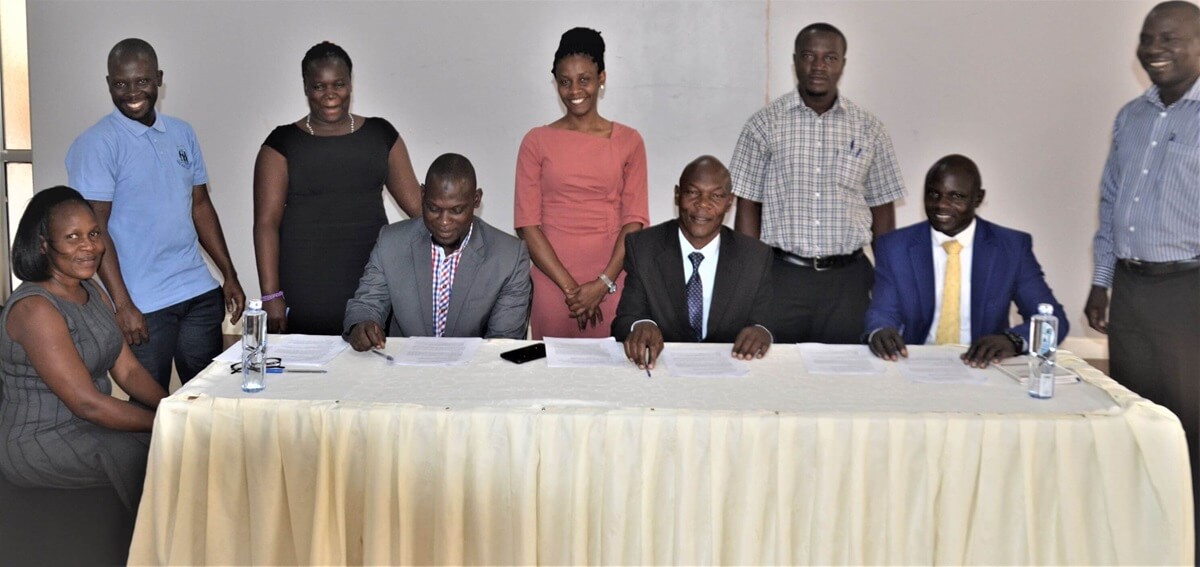
Three CHI schemes to form a joint pool
Three community health insurance (CHI) schemes supported by Save for Health Uganda (SHU) have signed two memoranda of understanding to create a joint pool of funds that will enable them to contract a national-level referral health facility for specialized services and make benefits to their members portable across regions.
The schemes that signed formal collaboration on 2nd June, 2022, are Munno mu Bulwadde Union of schemes organization (MBUSO) which brings together 68 rural-based sub-schemes in Luwero, Nakaseke and Nakasongola districts, Central region Urban Munno mu Bulwadde scheme (CRUMBS) with four (4) urban sub-schemes in Luwero, Nakaseke, Nakasongola and Masaka districts, and Western Ankole Tweragurize Schemes’ Association (WATSA) which coordinates 20 rural sub-schemes in Bushenyi, Mitooma and Sheema districts. MBUSO and CRUMBS operate in the central while WATSA is in the western region of Uganda.
The objective of the joint pool is to further increase healthcare benefits for CHI scheme members through contracting a national level referral healthcare provider for specialized services. The schemes will achieve this by merging part of their funds to handle referral cases.
Under the memorandum for portability of benefits, scheme members will be able to access healthcare services at any facility contracted by the three schemes across the two regions. This will increase accessibility to healthcare benefits for scheme members who may need services while they are away from their respective parent schemes.
The three schemes together have service contracts with 21 healthcare facilities in central and western Uganda. The partner schemes will settle healthcare bills on behalf of each other regardless of where the patient comes from.
Members of the CHI schemes had always demanded for a national level referral facility that can manage some of the complicated cases which the locally contracted service providers cannot handle. The members had also expressed need for a mechanism that enables them to be covered beyond the official geographical catchment of their schemes in an arrangement called portability of benefits.
Previously, it was not possible for the schemes to enter into such arrangements because they were fragile and each of them managed a small pool of funds individually. However, over the past two years, SHU has built capacity of some of the schemes to consolidate their pools to enable them increase healthcare benefits including specialized services which the members have been yearning for.




